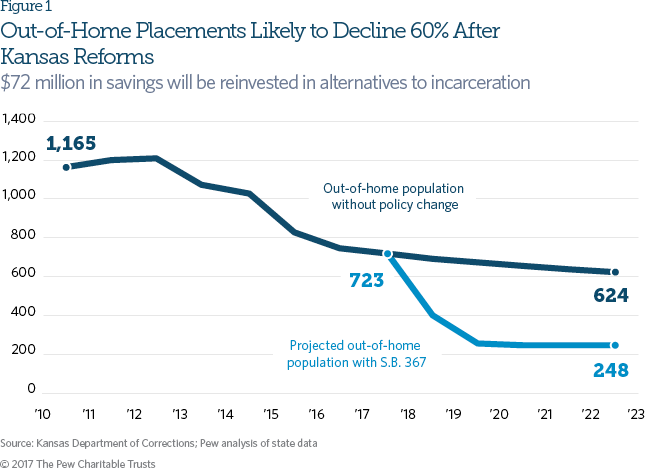Juvenile Justice Reforms in Kansas Show Early Signs of Success
Passed with overwhelming bipartisan support in 2016, S.B. 367 creates standards to improve juvenile justice system
Last year, Kansas enacted reforms intended to improve its juvenile justice system by reducing the use of out of home placements and investing in community supervision and rehabilitative services—and they’re already showing early signs of success.
The reforms, passed with strong bipartisan support as Senate Bill 367, restrict the placement of certain juveniles in correctional facilities, focus the system’s most intensive responses on the highest-risk juveniles, and shift significant resources toward evidence-based alternatives that allow youth to be supervised safely while remaining at home. As a result, Kansas was projected to cut juvenile residential placements approximately 60 percent by 2022 and yield $72 million for reinvestment in alternatives to incarceration over five years.
The new law will not go into full effect for several years, but these early signs of progress are encouraging:
- The number of youth held in detention statewide fell from 123 in July 2016 to 89 in March 2017, and during the same period, the group home population dropped from 145 to 83.
- On March 3, 2017, the Kansas Department of Corrections closed one of its two juvenile correctional facilities, which was funded to operate as a 128-bed facility but had a population of just 11 at the end of December 2016.
- The savings realized by the drop in incarceration have allowed the state to shift $8.4 million to evidence-based services.
- Five million of the $8.4 is being reinvested in new grant opportunities to enhance community-based services by providing access for more youth and supporting regional or interbranch collaborations to address the specific needs of youth.
- The Kansas Juvenile Justice Oversight Committee, charged with guiding implementation of the changes in law and approving processes for comprehensive data collection to measure performance, has met quarterly in Topeka since Oct. 24, 2016.









